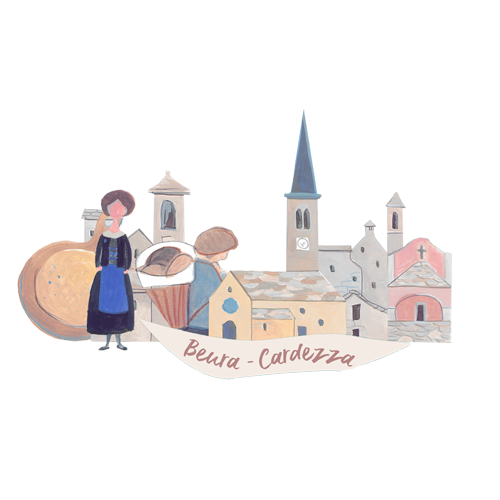Dopo aver conquistato l’Ossola, nel I secolo a.C., i Romani costruirono una rete di mulattiere sulle pendici dei monti affacciati sul Toce, preferendo percorsi a mezza quota. Le mulattiere romane sono lastricate con grosse lastre di beola locale, disposte trasversalmente per tutta la lunghezza della strada. Tra Cuzzego e Beura vi è un tratto lastricato di circa 500 m, a circa 100 m sopra il piano del Toce, denominato scupela e delimitato dagli scupei. Altri tratti visibili sul territorio fa pensare che la strada giungesse da Mergozzo e, passando per Premosello, Vogogna e Beura andasse poi verso l’attuale Domodossola e continuasse verso nord, fino alla Svizzera.
After conquering Ossola, in the 1st century B.C., the Romans built a network of mule tracks on the slopes of the mountains facing the river Toce, preferring paths at half altitude. The Roman mule tracks are paved with large slabs of local beola, arranged transversely along the whole length of the road. Between Cuzzego and Beura there is a paved stretch of about 500 m, about 100 m above the level of the river Toce, known as scupela and delimited by the scupei. Other visible stretches on the territory suggest that the road came from Mergozzo and, passing through Premosello, Vogogna and Beura, went towards Domodossola and continued northwards, up to Switzerland.
TI TROVI A
YOU ARE IN
